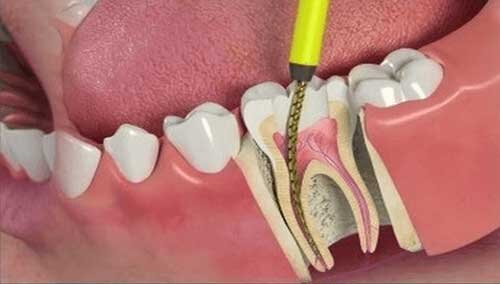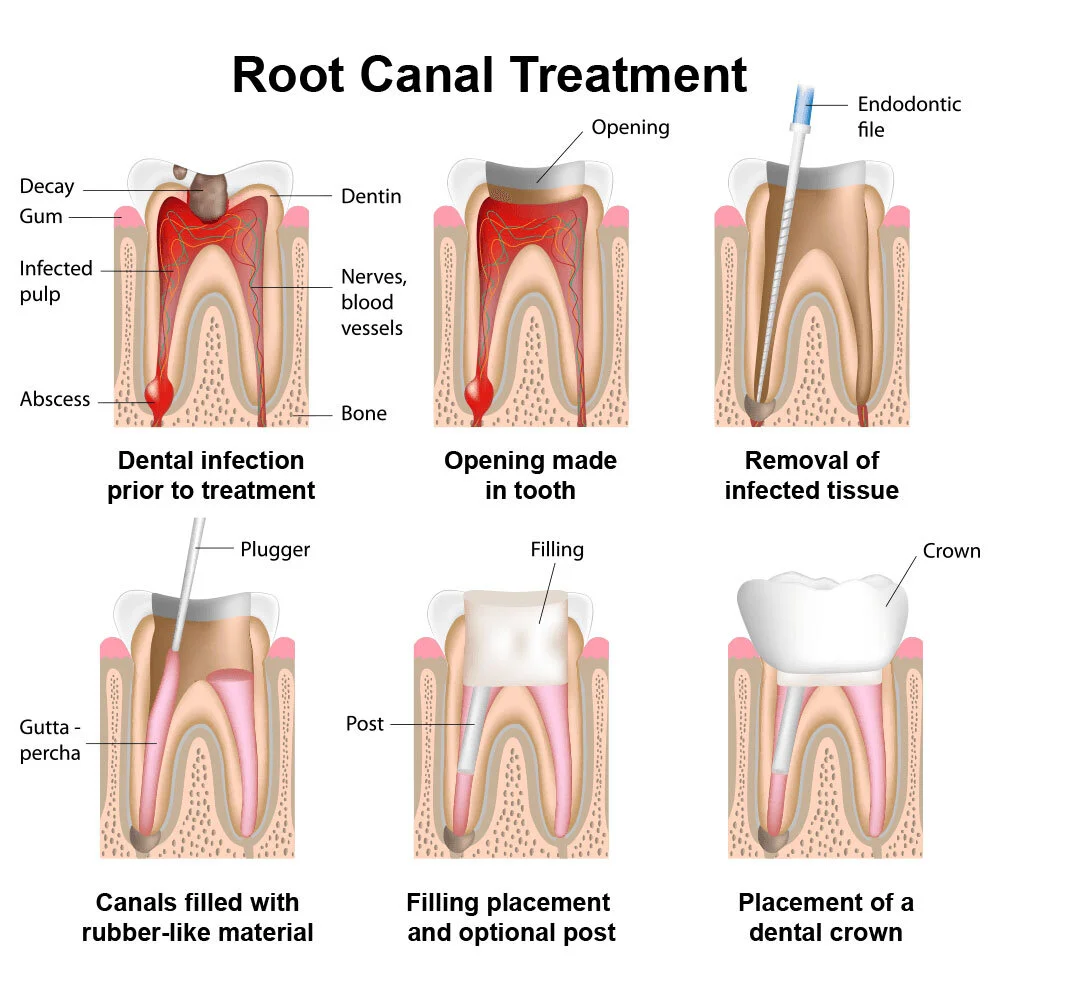Root Canals: Not as Scary as You Think
Don’t hurt yourself by ignoring tooth pain!
Here’s everything you need to know about this infamous procedure
May is an important month and it isn’t because the warm weather marks the beginning of Summer! This month is host to three very important dental holidays: Root Canal Awareness Week (May 9th-15th), Root Canal Day (May 12th), and Save Your Tooth Month (All May).
In honor of these awareness days, we’re talking about Root Canals and dispelling any rumors you may have heard about this tooth-saving procedure.
The Start of a Root Canal is the End of Tooth Pain
Throughout the years, root canals have incited fear and worry in patients. In fact, a survey conducted in 2016 by Association of Endodontists (AAE) states that 56% of participants say root canal treatments make them nervous.
Of course the procedure has a scary connotation attached to its name, but with today’s technology, it’s not much different than having a deep filling.
Treatment in the molars is the most common area for root canals and are typically performed on patients between the ages of 12 and 64 years old. As they are necessary to fix deep tooth decay, significant tooth chips, and other traumas, most of the time a root canal can be avoided so long as the nerves haven’t been infected.
That being said, you should save the tooth via root canal rather than have it extracted, if possible. Pulling a tooth not only takes longer, but it is usually more painful than the healing process after a root canal procedure.
When to Seek Treatment
A step by step process of a root canal procedure
So, how do you know if a root canal is on the horizon? To answer this question, we need to explain the anatomy of our teeth.
Each tooth has multiple layers on them for protection from everyday wear and tear. The outside layer consists of hard enamel while the second layer is dentin which reinforces your enamel and helps to support your tooth’s structure. A third, final layer is a soft inner core of ‘dental pulp’ made up of nerves, connective tissues, and blood vessels that extend from the tooth into the root of your jawbone.
When a root canal is needed…
A root canal is needed when decay gets into this soft inner core and makes your dental pulp inflamed, infected, or necrotic. This can happen as a result of bacteria gaining access to the inside of a tooth because of repeated dental procedures, cracks or chips, or faulty crowns.
Common symptoms that may signal the need of a root canal include:
Sores like pimples on the gums
Extreme pain while biting or chewing
Sensitivity to hot or cold that lasts after the cause has been removed
Tender and/or swollen gums
Discoloration or darkening of the gums
Tooth mobility (such as teeth feeling wiggly or loose)
These are all signs that there may be an underlying issue and you should call your dentist right away to make an appointment.
Did you know…?
According to the American Association of Endodontists (AAE), more than 15 million root canals are performed each year in the United States.
Step by Step of the Procedure
A root canal, as previously stated, is very similar to getting a large filling although it takes longer. Regularly completed by general dentists, you remain awake for the duration of the procedure which involves a few steps:
Numb the Area. First, the dentist will place a minimal amount of numbing medication to your gum next to the tooth in question. After it has taken effect, anesthetic is injected directly into the gums.
Dental Pulp is Removed. A small opening is made in the top of the tooth and, once the infected or inflamed pulp is exposed, the dentist will carefully remove it with a tool called an ‘endodontic file.’ Afterwards, they will then clean the pathways of the tooth.
Apply Antibiotics. Next the dentist may choose to coat the area with a topical antibiotic. This is done to make sure that both the infection is gone and won’t return.
Sealing the Tooth. Once everything has been disinfected and cleaned, the dentist fills and seals the tooth with a rubber-like material called ‘gutta-percha.’
Temporary Filling. Using the small opening at the top of the tooth, a filling made of soft, temporary material is added. This sealant helps prevent damage to canals from saliva.
Topped with a Crown. Finally, the procedure concludes with the placement of a crown for protection.
It is completely natural for your mouth to feel sore after a root canal treatment. To combat this, we recommend taking an over-the-counter pain medication like ibuprofen (Advil) or acetaminophen (Tylenol).
Did you know…?
Root canal procedures are generally considered the most painful dental treatment, but studies have found that only 17 percent of people who’ve had a root canal described it as their “most painful dental experience.”
10 Ways to Help Avoid a Root Canal
As we’re sure you know, preventing a root canal treatment is much easier than having one done. To help you on your continued journey of dental health, we’ve outlined 10 easy ways to prevent a root canal.
Brush your teeth 2x daily
Floss once daily
Stay away from hard candies and other hard foods
Take extra care and monitor already-weakened teeth
Stop chewing ice
If you grind or clench your teeth at night, use a mouth guard
Use a mouth guard while participating in sports
Steer clear of sugary and/or acidic foods and drinks (that means pop!)
Maintain regular dental appointments
If something hurts, get it checked out ASAP!
These tips are simple, easy, and don’t require investing a lot of time! Keeping your teeth clean and healthy is by far the best way to avoid root canals.
5 Ways to a Healthier Smile
Looking to improve your dental health? The top five ways you can achieve a brighter and healthier smile.
How to Prevent Childhood Tooth Decay
Cavities are one of the most common chronic diseases for children in the United States. Here’s how your child can avoid tooth decay.
What You Need to Know About Tooth Sensitivity
Are you one of the millions that suffer from sensitive teeth? Use these tips to fix your troublesome tooth pain!




